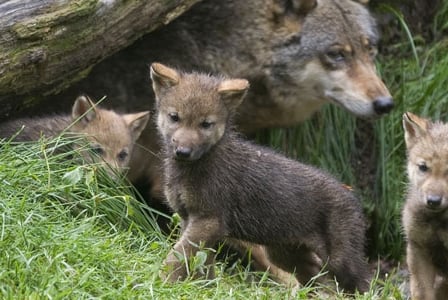
This Wildlife Wednesday, learn about the gray wolf, and why its still being threatened by humans.
Who’s afraid of the big, bad wolf? A lot of people, it turns out. Even though the gray wolf (also known as the common wolf, timber wolf, or Canis lupus) has bounced back from near extinction, it’s still being threatened by humans.
Habitat: mostly in remote areas in Canada and the United States, plus some areas in Europe and Asia
Wolf trivia
- Wolves are adaptable when it comes to food, eating both large and small prey as well as fruit. They also scavenge and eat garbage or livestock if food is scarce.
- Like their dog cousins we’re so familiar with, wolves are clever, social animals that work in groups—six to eight animals is the average.
- They travel great distances to find food, sometimes as far as 20 km in a single day.
- Pups are cared for by the entire group, and even if the parents are out hunting, there’s always someone around to babysit the young.
Why they’re threatened and how you can help
This wolf was originally the most widely distributed animal in the world. However, it faced near extinction in the wild, and its population is still very restricted in many parts of the world such as Europe, Mexico, and the Middle East.
Here in Canada, however, its numbers are thankfully stable. Yet unlike many species, the wolf’s primary threat was not habitat loss or degradation—it was hunting by humans. Deliberate hunting and even poisoning was the biggest threat to wolves, because of humans’ fear of wolves. But the truth is wolves have a lot more reason to be scared of us: wolves almost never attack humans; it’s legends and fairy tales that have passed on the belief that they’re ruthless villains.
Recent events show just how pertinent these beliefs still are: a current wolf-kill contest in the Peace River area of BC is drawing criticism from environmental groups. The contest is offering cash rewards for the biggest and smallest wolf killed, leading critics to wonder how far we’ve progressed in our conservation efforts as a society.
If you’re interested in protecting wolf populations, contact local environmental groups and conservation organizations, and consider writing letters to local politicians and newspapers.

